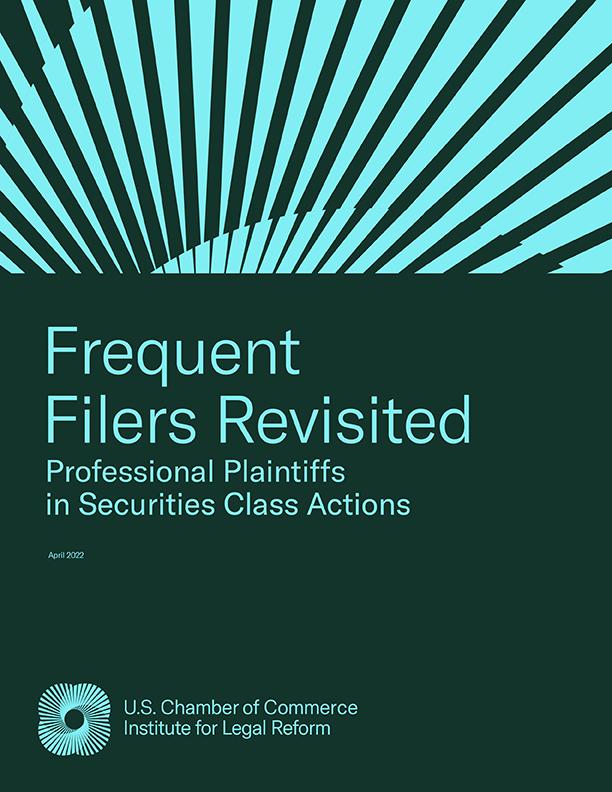Congress passed the Private Securities Litigation Reform Act (PSLRA) in 1995 as a measure of protection for our legal system and securities markets. These reforms were implemented to prevent excessive securities fraud class action lawsuits. However, ILR’s latest research, Frequent Filers Revisited, shows the law is not working as intended.
When operating as expected, investing in securities helps make our markets more efficient. Many Americans use the securities markets to save for retirement or build a nest egg as an independent investor, as well as through an institution or employer-sponsored 401ks and pensions.
However, it is no secret that our securities markets are complex and confusing. Securities require careful evaluation before being traded, and when investors act on bad or fraudulent information, it can cost them a great deal of money.
Securities fraud class actions were originally intended to help protect investors impacted by such fraudulent activity, and the Private Securities Litigation Reform Act was enacted to distinguish legitimate claims from frivolous claims. But because of loopholes in the PSLRA and the potential for high attorneys’ fees, securities fraud class actions are often brought against companies by plaintiffs’ firms that team up with “professional” plaintiffs to turn class actions into a volume business.
Here’s how plaintiffs’ firms have found their way around the Private Securities Litigation Reform Act:
- Individual frequent filers have exploited loopholes in the Private Securities Litigation Reform Act and now predominate in securities cases challenging mergers and acquisitions. Each year, they file dozens of cases with the same law firms, relying on cookie-cutter complaints.
- Practice does not make perfect. The cases filed by these individual frequent filers rarely lead to any meaningful benefit for shareholders. Lawsuits are filed and then quickly voluntarily dismissed, with no settlement paid to the shareholders. In fact, of 127 securities class actions launched by individual frequent filers during the study period, not a single case ended with a settlement or judgment in favor of the class.
- However, the suits do produce a steady stream of fees for the lawyers. In many circumstances they receive so-called “mootness” fees that are paid by the corporate defendants in exchange for voluntary dismissal of their suits.
- Institutional frequent filers—for whom the PSLRA’s five-cases-in-three-year limit is routinely waived—continue to serve as lead plaintiffs in many securities class actions. These institutions vary greatly in their ability to represent the interests of absent class members and some agree to inflated fee percentages in many of the largest settlements.
In Frequent Filers Revisited, we suggest several reforms to deal with the problem of frequent filers in securities fraud class actions:
- Close loopholes in the Private Securities Litigation Reform Act. Congress should amend relevant portions of the PSLRA to cover individual securities cases, at least if those individual actions challenge a merger or acquisition.
- Further limit frequent filers. Congress should broaden the Private Securities Litigation Reform Act’s limitation on repeat filers. The PSLRA currently prohibits individual shareholders from serving as the lead plaintiff in more than five securities class actions within three years. Shareholders should not be able to circumvent this limit.
- Rethink shareholder voting suits. Congress should consider adopting more stringent standing requirements in shareholder voting cases.
By closing the loopholes in the PSLRA that facilitate merger objection lawsuits and encourage institutional frequent filers, Congress would be taking necessary steps toward a legal system that better aligns the interests of lead plaintiffs and their fellow shareholders.
